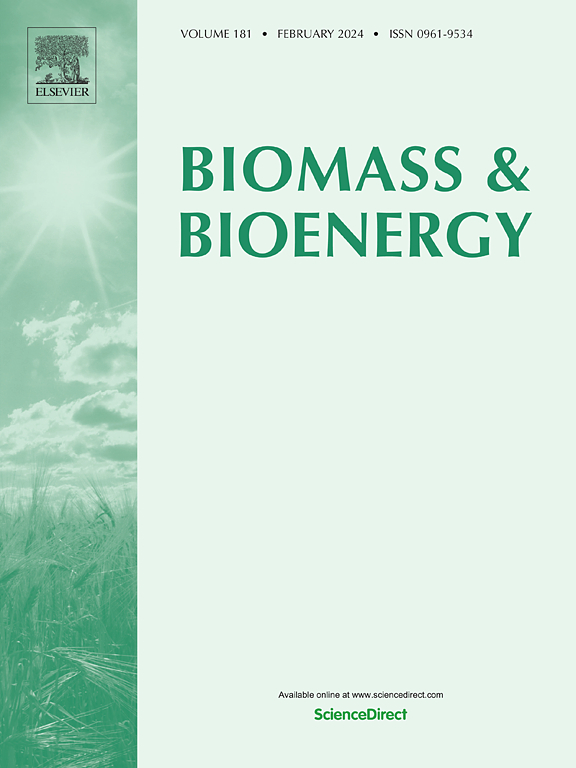基于深度学习的秸秆-马铃薯渣混合物颗粒特性表征研究
IF 5.8
2区 生物学
Q1 AGRICULTURAL ENGINEERING
引用次数: 0
摘要
将秸秆和马铃薯残渣压缩成颗粒,解决了运输和储存方面的挑战,同时促进了可持续的废物管理。在本研究中,利用深度学习模型来确定混合颗粒的微观图像中的参数。结合混合球团的力学性能,分析了混合球团在成型过程中的变化机理。首先,利用电子万能试验机对圆柱形试样进行压缩,确定其松弛比和抗压强度等力学指标;ResNet-Unet模型用于识别在不同实验条件下微观图像中参数的变化,例如固体桥梁和裂缝的存在。研究结果表明,该模型在识别固体桥梁和裂缝方面的准确率分别为92%和94%。其次,基于不同实验条件下的扫描电镜(SEM)观察到的微观图像,深入分析了松驰比和抗压强度变化的机理。研究表明,生物质颗粒生产过程中固体桥的形成是一个生长、扩散和与其他固体桥融合的动态过程。此外,固体桥梁的形成会影响弛豫比和抗压强度的变化。同时,固体桥的生成不受投料量的影响。结果表明,适当的加料量可以减少球团表面裂纹的长度,提高成型质量。本文章由计算机程序翻译,如有差异,请以英文原文为准。

Research on characterization of pellet characteristics of straw and potato residue mixture based on deep learning
Compressing straw and potato residues into pellets addresses transportation and storage challenges while promoting sustainable waste management. In this study, a deep learning model was utilized to ascertain the parameters within the microscopic images of the mixed pellets. Moreover, the mechanisms of changes in the molding process of the mixed pellets were analyzed in conjunction with their mechanical properties. Firstly, a cylindrical specimen compressed by an electronic universal testing machine was employed to ascertain mechanical indices, including the relaxation ratio and crushing strength. The ResNet-Unet model was used to identify changes in parameters, such as the presence of solid bridges and cracks, in microscopic images under varying experimental conditions. The findings of the study demonstrate that the model exhibits an accuracy of 92 % and 94 % in identifying solid bridges and cracks, respectively. Secondly, the mechanisms behind the changes in relaxation ratio and crushing strength were subjected to in-depth analysis based on the microscopic images observed by scanning electron microscopy (SEM) under different experimental conditions. The study revealed that the formation of solid bridges during the production of biomass pellets is a dynamic process involving growth, diffusion, and merging with other solid bridges. Additionally, the formation of solid bridges can influence the changes in relaxation ratios and crushing strengths. Meanwhile, the generation of solid bridges was not found to be affected by the feeding amount. It was observed that an appropriate feeding amount could reduce the length of cracks on the pellet surface and improve the quality of the molding.
求助全文
通过发布文献求助,成功后即可免费获取论文全文。
去求助
来源期刊

Biomass & Bioenergy
工程技术-能源与燃料
CiteScore
11.50
自引率
3.30%
发文量
258
审稿时长
60 days
期刊介绍:
Biomass & Bioenergy is an international journal publishing original research papers and short communications, review articles and case studies on biological resources, chemical and biological processes, and biomass products for new renewable sources of energy and materials.
The scope of the journal extends to the environmental, management and economic aspects of biomass and bioenergy.
Key areas covered by the journal:
• Biomass: sources, energy crop production processes, genetic improvements, composition. Please note that research on these biomass subjects must be linked directly to bioenergy generation.
• Biological Residues: residues/rests from agricultural production, forestry and plantations (palm, sugar etc), processing industries, and municipal sources (MSW). Papers on the use of biomass residues through innovative processes/technological novelty and/or consideration of feedstock/system sustainability (or unsustainability) are welcomed. However waste treatment processes and pollution control or mitigation which are only tangentially related to bioenergy are not in the scope of the journal, as they are more suited to publications in the environmental arena. Papers that describe conventional waste streams (ie well described in existing literature) that do not empirically address ''new'' added value from the process are not suitable for submission to the journal.
• Bioenergy Processes: fermentations, thermochemical conversions, liquid and gaseous fuels, and petrochemical substitutes
• Bioenergy Utilization: direct combustion, gasification, electricity production, chemical processes, and by-product remediation
• Biomass and the Environment: carbon cycle, the net energy efficiency of bioenergy systems, assessment of sustainability, and biodiversity issues.
 求助内容:
求助内容: 应助结果提醒方式:
应助结果提醒方式:


